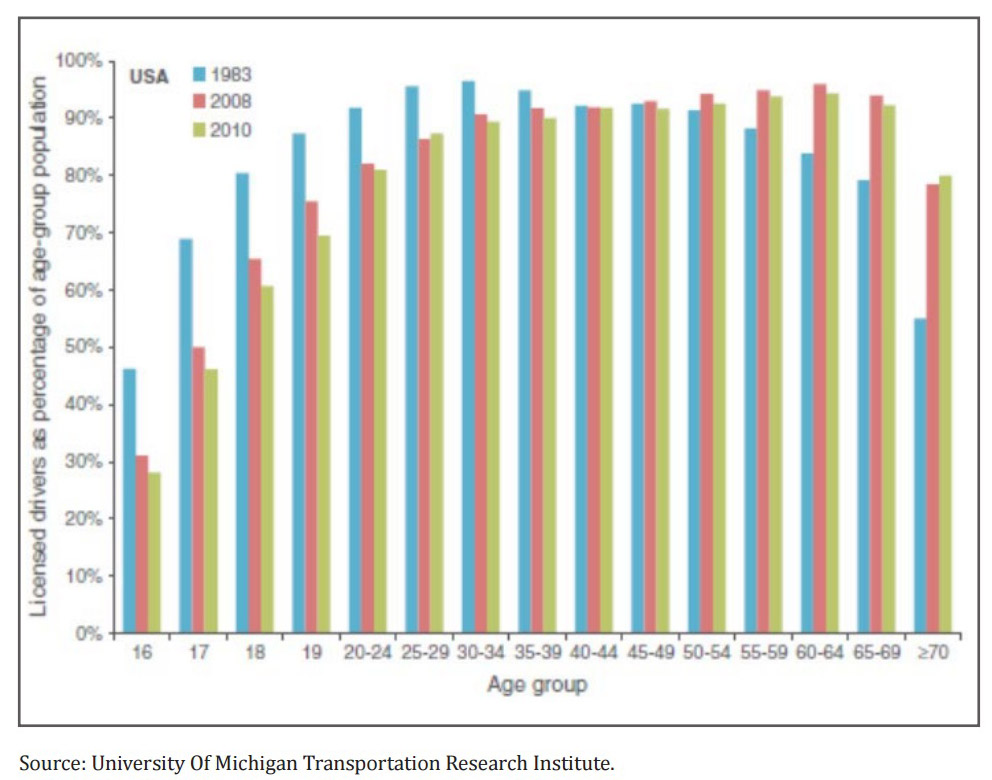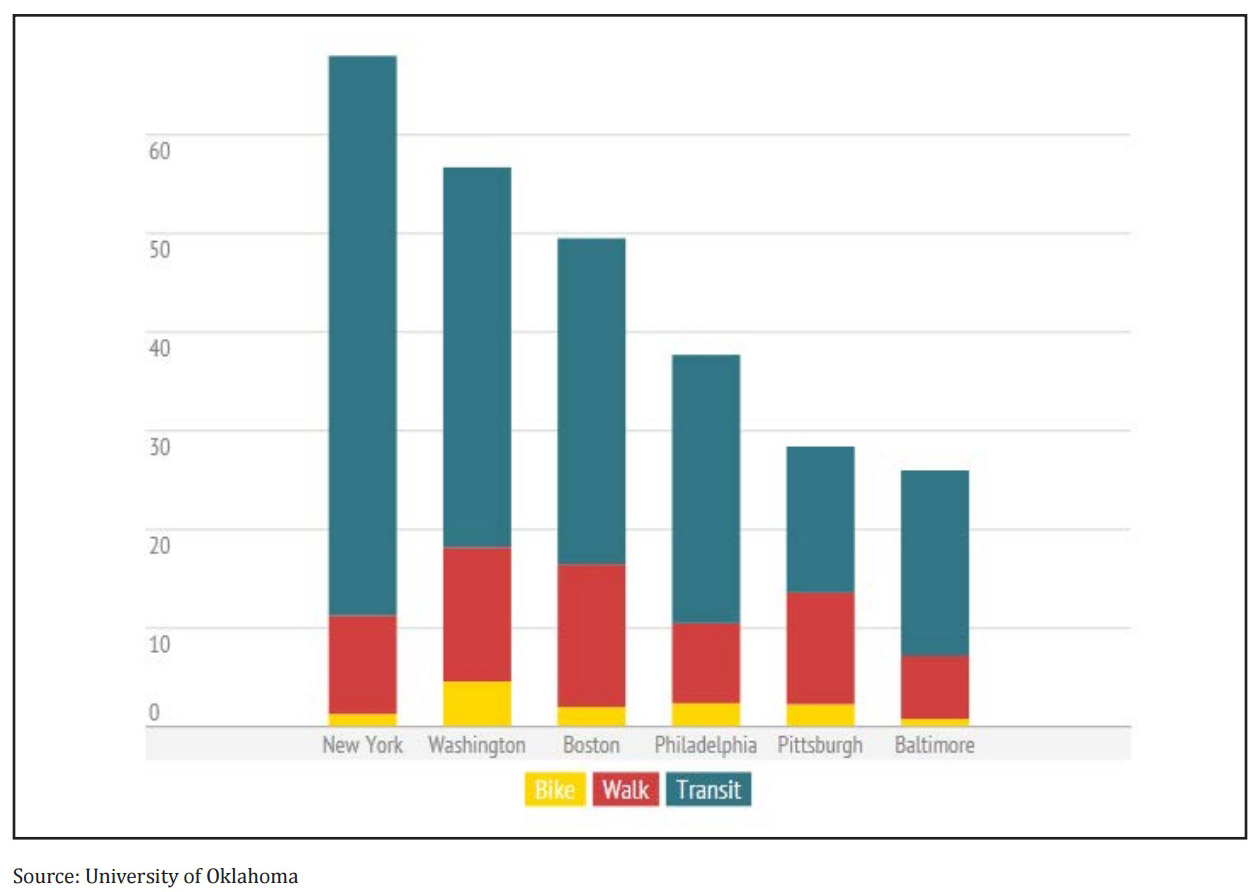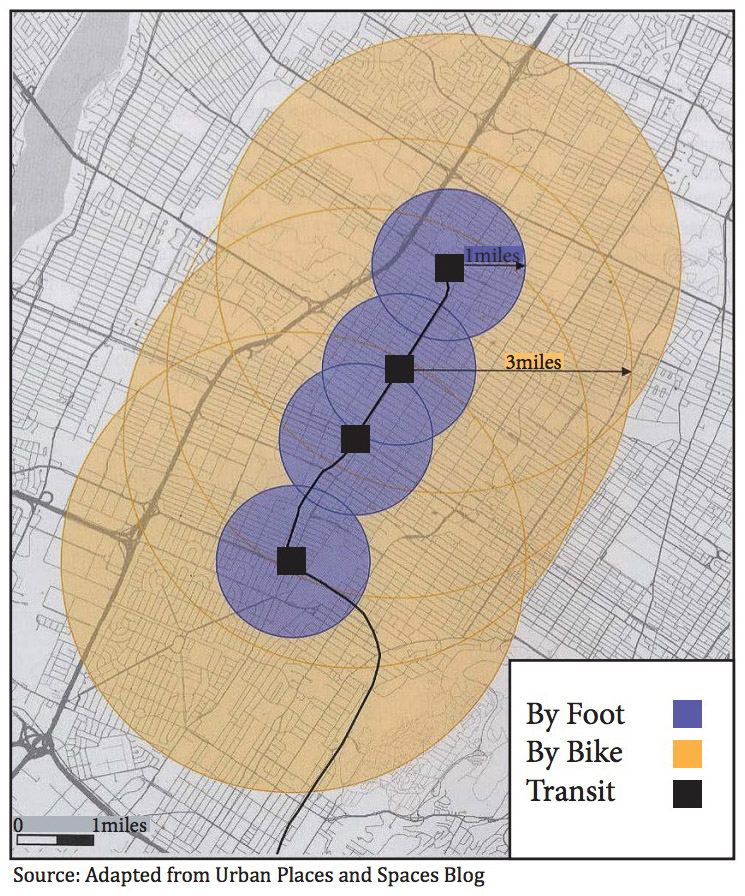SOUTHEASTERN PENNSYLVANIA TRANSPORTATION AUTHORITY
Introduction – The Trend Line
SEPTA’s ridership is nearing quarter century highs. In Southeastern Pennsylvania and across the United States, rates of both private auto ownership and use are down. The region’s three fastest growing demographic groups – “Millennials” (20-34 years old) , “Baby Boomers” (60-75 years old), and an influx of newly-settled immigrants of all ages – are less likely to own a car (or even a driver’s license) and are more likely to use transit. These emerging local demographic groups tend to not only rely on transit for commuting to work but also for other discretionary trips and often travel with luggage, strollers and bicycles.
By acknowledging these demographic trends and incorporating them into all aspects of planning, SEPTA will continue to serve its growing customer base with mobility options that meet increasingly diverse needs.
FIGURE 1: LICENSED DRIVERS AS A PERCENTAGE OF THEIR AGE-GROUP POPULATION
One of the most significant trends impacting SEPTA’s ability to serve its growing and diversifying customer base is the increase of bicycle use as a mainstream mode of transportation. According to the Alliance for Biking & Walking, more than 90 percent of people who use public transit walk or bike to reach transit stops. In Philadelphia, bike ridership has increased by more than 210 percent since 1990. More than 12,000 Philadelphians now bike to work each day. Combined with transit and walking, Philadelphia now has the fourth largest non-auto mode share in the Northeast (see Figure 2).
FIGURE 2: LARGEST NORTHEAST U.S. CITIES: NON-AUTO MODE SHARE
Bikes as Mainstream
The emergence of bicycling as a mainstream form of transportation is both an opportunity and challenge. It is an opportunity because bicyclists are less likely to own a car and therefore more likely to use transit for both work-related and discretionary trips. With proactive planning, bicycling can serve to make SEPTA’s system and services more accessible to a larger number of people by increasing the rider catchment area for each station. Bicycle infrastructure is also less expensive to build than auto infrastructure, and improving facilities and policy for bicyclists can be a cost-effective way of increasing the overall capacity of each station area.
A report published in 2014 by the Mineta Transportation Institute entitled Perceptions of Bicycle-Friendly Policy Impacts on Accessibility to Transit Services: The First and Last Mile Bridge quantified this ridership market opportunity. Philadelphia “cycle transit users”, or CTUs, that were polled in the study estimated that they travel 2.8 miles by bicycle as part of their multimodal trips. This “secondary catchment area” is much broader than the “primary catchment area” for pedestrian access, which is typically one-half to three-quarters of a mile. Philadelphia CTU respondents also indicated that if they could not easily combine bicycling and transit, approximately 15 percent would use another mode instead of transit.
FIGURE 3: WHAT IS THE TRANSIT CATCHMENT AREA?
On the other hand, rapid growth in cycle-transit use challenges SEPTA’s already strained capacity. For example, riders demanding additional space on rail vehicles for large items such as bicycles could impact passenger flows, particularly during heavy ridership peak periods.
Bicycling emergence as a mainstream form of transportation can benefit SEPTA by accelerating Southeastern Pennsylvania’s continued trend away from auto dependence and towards more sustainable, multi-modal travel patterns. However, improving and increasing capacity for multi-modal commuting will require thoughtful planning and consideration.
Download full version (PDF): SEPTA Cycle-Transit Plan
About the Southeastern Pennsylvania Transportation Authority
www.septa.org
SEPTA is in the business of sustainability. Our approach to sustainability is “triple-bottom-line” – accounting for economic, social, and environmental organizational needs and regional opportunities. Working with our partners, SEPTA will use this three-pronged “people-planet-prosperity” approach to drive sustainable decision-making through the organization and work to build a more sustainable region.
Tags: Bicycling, Bike Lanes, Cycling, PA, Pennsylvania, Philadelphia, SEPTA, Southeastern Pennsylvania Transportation Authority









 RSS Feed
RSS Feed